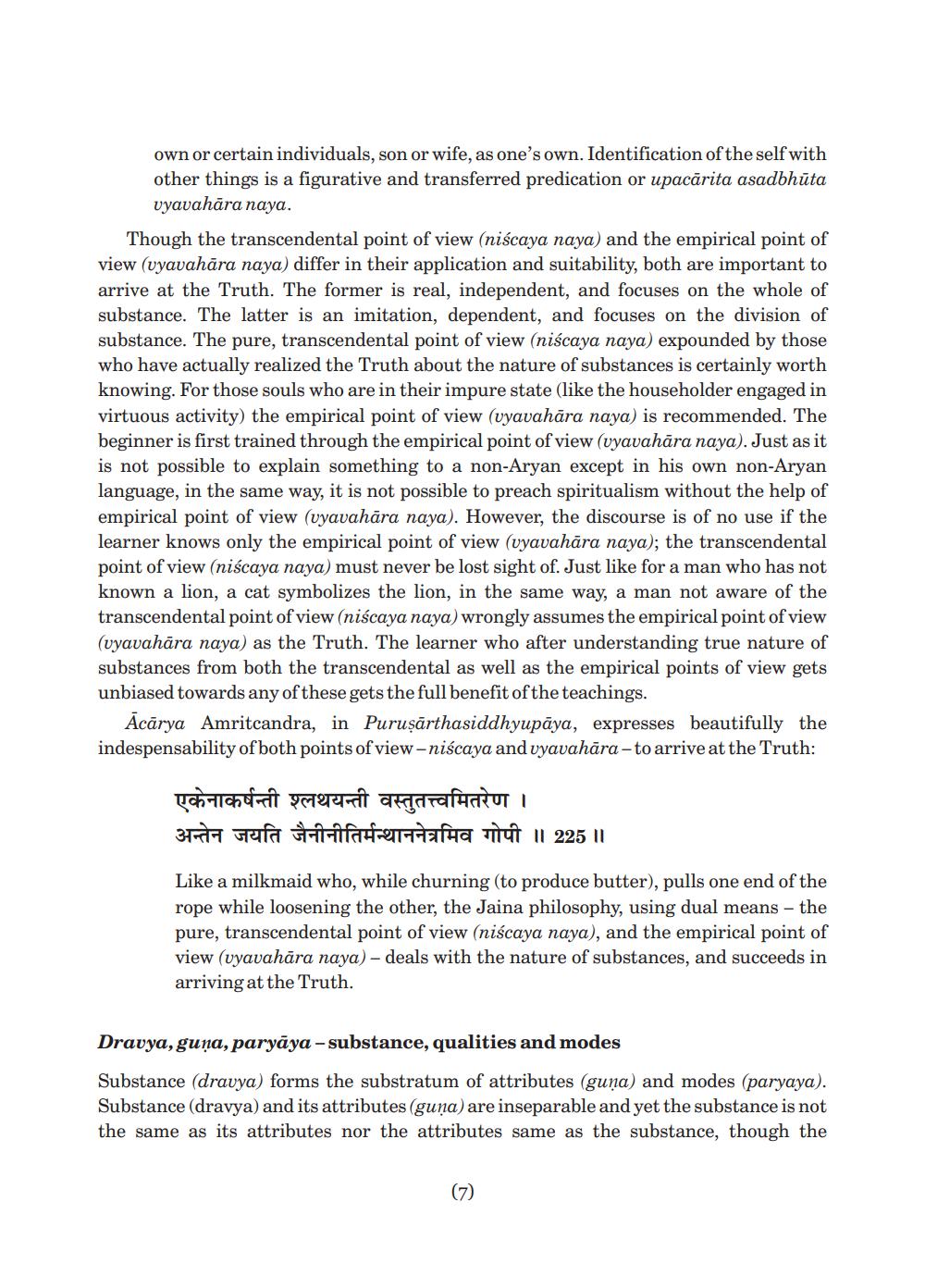________________
own or certain individuals, son or wife, as one's own. Identification of the self with other things is a figurative and transferred predication or upacarita asadbhuta vyavahāra naya.
Though the transcendental point of view (niscaya naya) and the empirical point of view (vyavahāra naya) differ in their application and suitability, both are important to arrive at the Truth. The former is real, independent, and focuses on the whole of substance. The latter is an imitation, dependent, and focuses on the division of substance. The pure, transcendental point of view (niscaya naya) expounded by those who have actually realized the Truth about the nature of substances is certainly worth knowing. For those souls who are in their impure state (like the householder engaged in virtuous activity) the empirical point of view (uyavahara naya) is recommended. The beginner is first trained through the empirical point of view (vyavahāra naya). Just as it is not possible to explain something to a non-Aryan except in his own non-Aryan language, in the same way, it is not possible to preach spiritualism without the help of empirical point of view (vyavahara naya). However, the discourse is of no use if the learner knows only the empirical point of view (vyavahara naya); the transcendental point of view (niscaya naya) must never be lost sight of. Just like for a man who has not known a lion, a cat symbolizes the lion, in the same way, a man not aware of the transcendental point of view (niscaya naya) wrongly assumes the empirical point of view (vyavahāra naya) as the Truth. The learner who after understanding true nature of substances from both the transcendental as well as the empirical points of view gets unbiased towards any of these gets the full benefit of the teachings.
Acarya Amritcandra, in Puruşarthasiddhyupaya, expresses beautifully the indespensability of both points of view-niscaya and vyavahara-to arrive at the Truth:
एकेनाकर्षन्ती श्लथयन्ती वस्तुतत्त्वमितरेण ।
अन्तेन जयति जैनीनीतिर्मन्थाननेत्रमिव गोपी ॥ 225 ॥
Like a milkmaid who, while churning (to produce butter), pulls one end of the rope while loosening the other, the Jaina philosophy, using dual means - the pure, transcendental point of view (niścaya naya), and the empirical point of view (vyavahāra naya)- deals with the nature of substances, and succeeds in arriving at the Truth.
Dravya, guya, paryaya-substance, qualities and modes
Substance (dravya) forms the substratum of attributes (guna) and modes (paryaya). Substance (dravya) and its attributes (guna) are inseparable and yet the substance is not the same as its attributes nor the attributes same as the substance, though the
(7)




